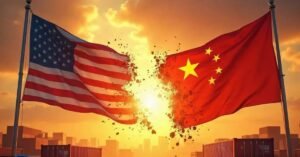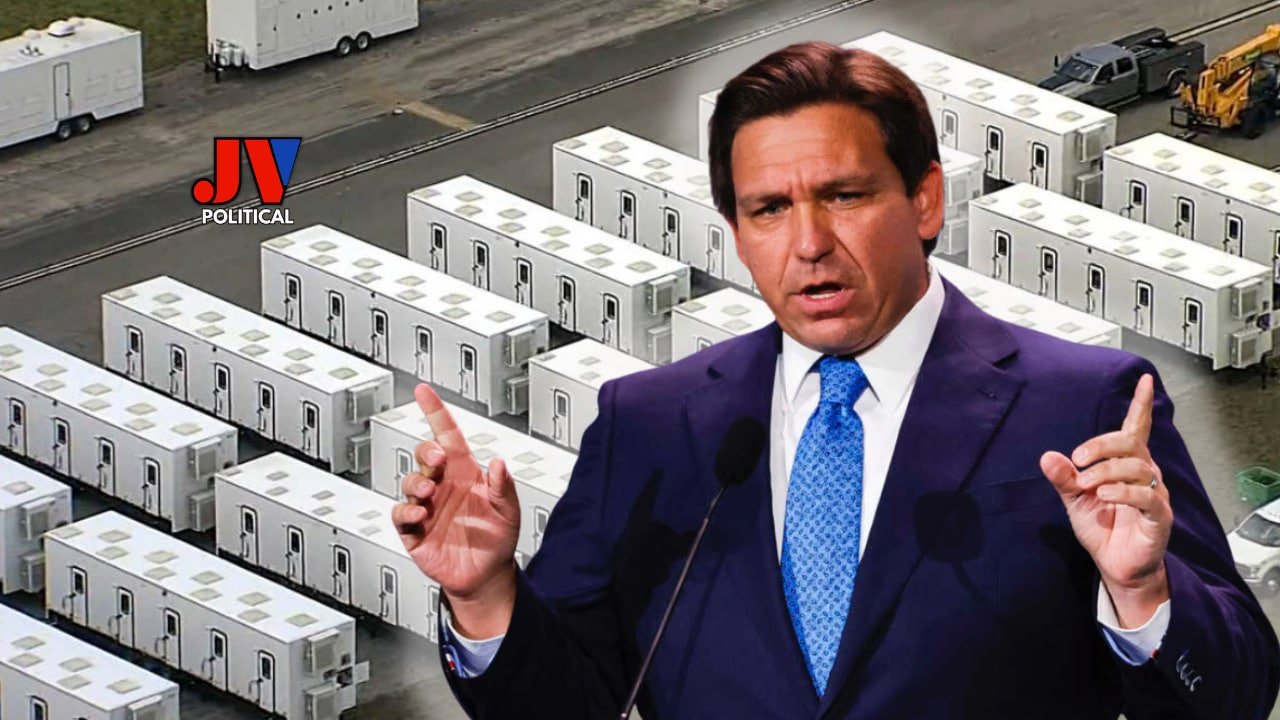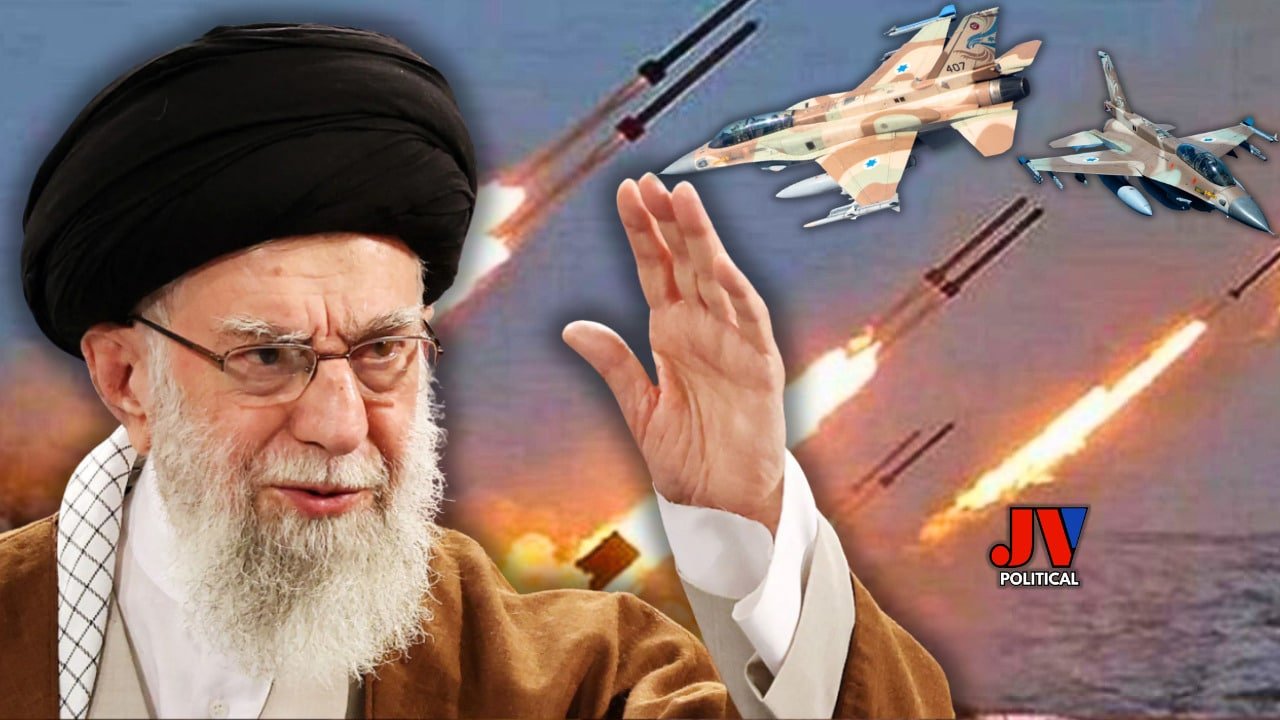Could Factory Shutdowns Spark a Chinese Spring? US-China Trade War Fallout
President Donald Trump’s aggressive tariff policies have rekindled the US-China trade war which now threatens to destabilize China’s economic structure. Factories close their doors while workers return home and export orders rapidly decline. The economic turmoil might provoke a political revolt that opposes Xi Jinping and his strong control. JV Political analyzes how Trump’s MAGA-led trade measures might trigger instability within China’s ruling Communist Party. This blog analyzes America’s powerful economic strategies to determine if they could trigger a revolution in Beijing amid the current economic chaos and growing dissent. Buckle up, patriots—this is a game-changer!
The Trade War’s Economic Earthquake
Chinese goods face Trump’s tariffs that reached 145% which resulted in massive disruption to China’s manufacturing industry. The numbers tell a grim story:
The Purchasing Managers’ Index (PMI) for Chinese factory activity fell to 49.0 in April 2025 marking its lowest point since December 2023.
The US-import orders which generated more than $400 billion each year have disappeared and caused widespread production shutdowns.
In coastal areas Yiwu and Dongguan factories have started furloughing employees while some companies have ceased operations.
These figures represent the survival of millions of Chinese factory workers. The backbone of China’s export-driven growth is crumbling as small factories struggle to survive under Trump’s “America First” policies. Production lines remain idle at toy factories while Guangzhou clothing manufacturers terminate their orders. The CCP’s economic prosperity promise is failing while citizens experience financial hardship.
Why Trump’s Tariffs Are Working
Trump’s strategy is simple: hit China where it hurts—its wallet. The increased tariffs compel Beijing to address its unfair trading methods which include intellectual property theft and state-sponsored dumping. Trump remains unyielding whereas previous globalists folded. According to senior fellow Gordon Chang of the Gatestone Institute China has begun to ease tariffs on selected US goods including semiconductors to avoid further economic difficulties. The result shows MAGA triumphs when strength replaces appeasement to achieve goals.
Could Economic Pain Ignite a Chinese Spring?
The “Chinese Spring” term compares to the Arab Spring when economic distress led to popular demonstrations against authoritarian governments. Could China follow suit? The ingredients are there:
Rising Unemployment: Factory shutdowns are leaving millions jobless. Employees in Guangdong experience a drastic wage reduction from daily earnings between $40-$54 to only $14.
Deflation and Debt: The Chinese economy faces multiple challenges including a property market collapse and persistent deflation which along with high local government debt make the tariff shock more difficult to manage.
Youth Discontent: The current generation of Chinese youth who face limited opportunities are beginning to doubt the CCP’s concept of the “Chinese Dream.”
China has experienced social unrest as a direct result of past economic crises. Economic instability from inflation and widespread corruption contributed to the 1989 Tiananmen Square protests. The social media platforms Weibo and Douyin currently display widespread dissatisfaction even though censorship remains strict. The CCP’s propaganda machine operates at full speed to produce AI-generated memes ridiculing Trump’s tariffs and American workers while revealing deeper societal concerns. When economic hardship becomes more severe could online discontent evolve into public demonstrations?
The CCP’s Playbook: Control and Deflection
Xi Jinping isn’t sitting idle. Through nationalist rhetoric the CCP depicts Trump as a threatening bully who wants to control China. Videos from state media such as “Never Kneel Down!” mobilize citizens against America while Xi Jinping promotes technological and agricultural self-reliance. The Chinese government is pressuring nations such as South Korea to refrain from cooperating with American demands regarding rare-earth mineral exports. But these moves can’t hide the cracks. The Politburo’s job creation pledge for 12 million urban positions by 2025 appears empty given factory closures and insufficient economic stimulus measures.
Political Fallout: Xi’s Tightrope Walk
Xi’s rule depends on his ability to provide both stability and prosperity to the nation. The trade war threatens both. The CCP would encounter a legitimacy crisis if widespread factory shutdowns occur. Here’s what’s at stake:
- Internal Party Tensions: Party elites may lose confidence in Xi if they perceive his US hardline approach as a botched crisis management effort. Gordon Chang believes Xi Jinping cannot negotiate with Trump because doing so would make him appear weak.
- Public Unrest: The Chinese Communist Party’s control through surveillance systems remains powerful but widespread job losses might lead to protests among workers throughout industrial areas.
- Global Isolation: China’s confrontational trade strategies such as limiting rare-earth exports are driving away its allies. Tesla’s robot manufacturing could be affected due to Elon Musk’s warning about the dependency on Chinese magnets.
Trump’s tariffs are exposing Xi’s vulnerabilities. Without providing jobs and growth the CCP risks losing its “Mandate of Heaven” which represents an ancient belief in divine authority to govern. A Chinese Spring will not emerge immediately yet the necessary groundwork for it continues.
Trump’s Endgame: A Resurgent America
While China reels, Trump’s vision is clear: Trump aims to restore domestic manufacturing and lessen dependence on Beijing. The tariffs serve as an alarm for American firms that benefit from low-cost Chinese labor. The true cost of these policies manifests in higher consumer prices and diminished stock performance yet remains an essential step forward. President Trump declared that China has exploited the United States in ways no country has before and he is making efforts to establish fair competition that leads to a more autonomous America. MAGA patriots recognize this conflict as a battle they must fight.
What’s Next for the US-China Trade War?
There are no indications that tensions in the trade war between the US and China will decrease. China has implemented a 125% tariff on American goods and imposed restrictions on rare-earth minerals which indicate the trade war will persist for a long time. Yet, Beijing’s defiance is cracking. Chinese exporters have turned their attention to developing European and Latin American markets but the $400 billion US market cannot be replaced immediately. Trump’s decision to suspend tariffs for 90 days on countries other than China demonstrates strategic thinking as he separates Beijing from potential partners.
For China, the path forward is grim. Economists forecast a potential recession as Goldman Sachs predicts job losses could reach 20 million people. The Chinese Communist Party’s target of 5% growth for 2025 appears to be an unrealistic fantasy. Failure to stabilize the economy by Xi will result in public anger reaching boiling point and challenge the regime’s power stability.
Conclusion: MAGA’s Strategy Marks a Defining Moment for Global Politics
The tariffs that Trump implemented serve not only as economic tools but also demonstrate strategic global political genius. The U.S. President’s aggressive trade tactics against Chinese industrial centers reveal CCP vulnerabilities while preparing America for future dominance. Could factory shutdowns spark a Chinese Spring? The situation remains uncertain but pressure continues to build. JV Political stands by a leader who prioritizes America above all else and bravely confronts the Chinese dragon. Is Xi Jinping going to maintain his grip on power or will China experience revolutionary changes? Share your thoughts, spread this post, and become part of the MAGA movement at jvpolitical.com!
References
- BBC News, “China is not backing down from Trump’s tariff war. What next?” April 8, 2025.
- Reuters, “China’s factory activity falls sharply as Trump tariffs bite,” April 30, 2025.
- Fox Business, “China is ‘caving’ to Trump’s trade war strategy, expert signals,” April 25, 2025.
- The Guardian, “China manufacturing activity plummets amid Trump tariff war,” May 1, 2025.
- The New York Times, “Inside Factories in China, a Struggle to Survive Trump’s Tariffs,” April 19, 2025.
- CNBC, “Chinese factories are stopping production and looking for new markets as U.S. tariffs bite,” April 28, 2025.
- Washington Post, “As Trump softens his tone on the trade war, China refuses to budge,” April 24, 2025.
- PBS News, “Shipments from China fall as Trump’s tariffs loom over economy,” May 1, 2025.



















One Response